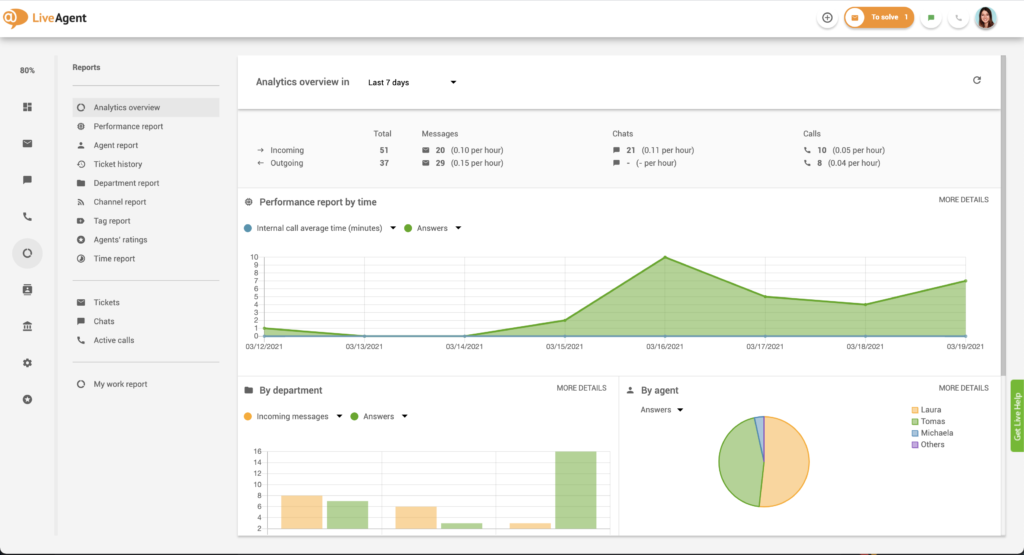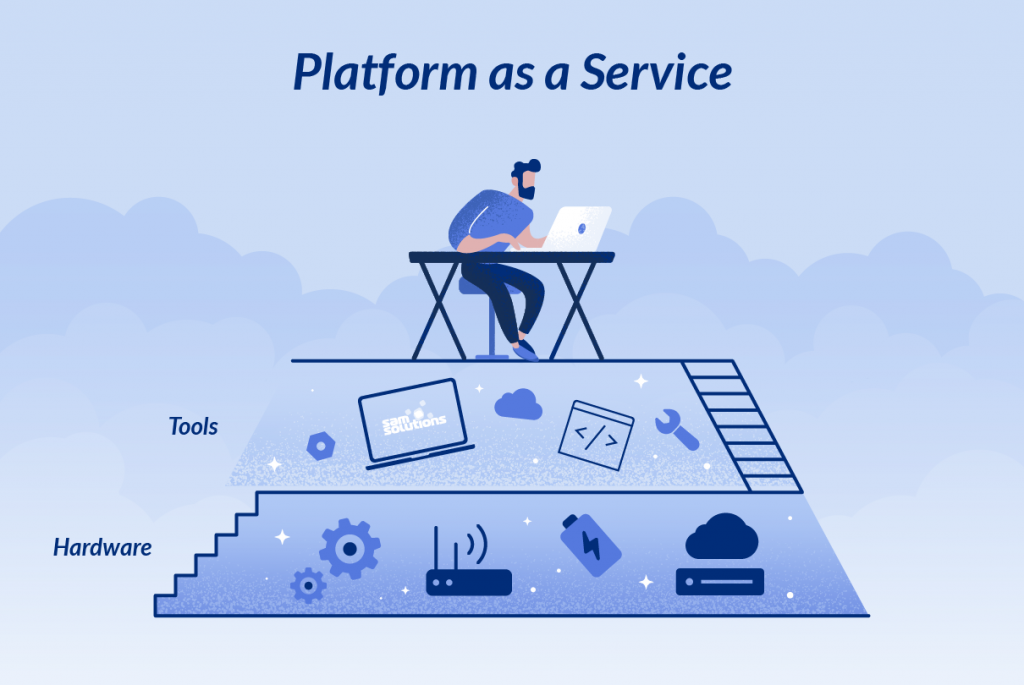Cloud computing is taking over, and Platform as a Service is gaining in popularity. Like all other cloud models, PaaS also involves subscribing and using it whenever needed.
However, companies can use this option to create any sort of application they can imagine using a development & deployment platform in the cloud. Cloud providers have diversified services that are focused on B2B, not just B2C.
Characteristics of a platform as a service (PaaS)
A cloud service provider supplies development teams with premade programming tools and application infrastructure components. This type of third-party provider cloud model sets PaaS apart from typical software development environments.
Along with Software as a Service (SaaS) and Infrastructure as a Service (IaaS), it is a cloud computing model that lets you develop, maintain, and deliver an application. Traditionally these were separate, and even if companies could get a full suite, they would have to install and store them on local devices. With these solutions, users can code and deploy directly to the cloud.
The all-in-one solution helps developers consolidate app deployment and their developer tools at the same time. It saves time by using premade components. Additionally, various integrations allow them to collect valuable business analytics.

What’s included in PaaS cloud computing services?
Like other cloud services, PaaS comes with underlying infrastructure, networking, storage, and servers. The system also allows developers to create different types of apps, including ones that use middleware, database management, software deployment, and intelligence services.
PaaS solutions have everything a modern company could need for software applications and infrastructure management. When it comes to servers, you can find solutions with physical or virtual servers, as well as a remote server and an email server.
Comprehensive database management systems, along with a wide range of database management tools, deployment tools, and environments, can help any development process regardless of the approach or the end goal.
How does platform as a service work?
PaaS systems power the back end of an application, including storage, operating systems, servers, and databases. In other words, developers get the tools and the environment to build their applications on a pre-existing back end.
Developers can work from any device, anywhere, and anytime with managed load balancing. This kind of setup allows developers to focus on user experience and the front-end. The whole environment also comes with continuous integration to provide extra functionality.
Providers of the PaaS environment apply security patches and maintain the platform as a whole. By using these sorts of environments, security risks are reduced, and development becomes more targeted.

Types of platforms as a service
PaaS solutions can be divided into countless categories. However, there are three major types that you should know.
- Open-Cloud or Open-Platform PaaS: these solutions can be free and open source. You can use them as completely independent and separate platforms providing lots of flexibility. In most cases, they are ideal for hybrid PaaS cloud options.
- PaaS for a SaaS Service: this kind of solution is tied closely to SaaS platforms that are used often, such as Intuit, Salesforce, and so on. These PaaS solutions create an ecosystem around a specific SaaS app for developers to add new capabilities that run on the core app.
- Operating Environment for PaaS: in most cases, these are IaaS vendors that provide PaaS capabilities. Even though they might not have the same functionalities, it can be a good option for users looking to commit to a particular IaaS. However, these PaaS systems have the potential for vendor lock-in.
Examples of platforms as a service
Amazon Web Services
AWS Elastic Beanstalk is the most popular PaaS solution. The great thing about it is that it allows IaaS users to build apps, and there are constantly new development tools being added. AWS Elastic Beanstalk is ideal for apps developed in Docker, Java, PHP, Python, and other programming languages.
IBM Cloud
IBM offers an open-source security platform with total control over the complete web application lifecycle. DevOps teams can utilize lots of different third-party service provider options extending functionalities.
Google App Engine
Google is always at the top of all digital services. Their app engine has excellent uptime and supports many language packages, GitHub integration, and many other valuable integrations.
PaaS comparison to internally hosted development environments
In a nutshell, traditional hosted development environments are far inferior to PaaS solutions. Simply put, traditional options don’t offer a lot of versatility or customization. At the same time, developers have to do most of the things themselves, including:
- setting up application servers
- creating a MySQL database
- performing diagnoses
- setting up dependencies
- setting up a firewall and taking care of overall security
- setting up the run-time platform
In other words, you have to do tons of work before you can start coding. Not only does PaaS remove all this work, but it also brings lots of other benefits, including:
- HTTP caching
- reliable backups
- easy scaling
- easy deployment
- no need for configuration
- faster time to market
- no need for software licenses
The difference between SaaS and PaaS
The crucial difference between the two is that SaaS is a service that lets people use a particular software over the Internet. The provider manages the platform and its infrastructure. A good example is LiveAgent’s help desk software.
PaaS, on the other hand, is a whole environment that clients can use to manage, run, and develop applications. This is without having to worry about managing their operating systems.
Fundamentally, PaaS lets users manage data and applications making it perfect for companies, while SaaS is designed for end-users.
Try LiveAgent today
LiveAgent is the best-rated and most reviewed all-in-one help desk software.
Unveiling the benefits of PaaS
Embark on an insightful journey into the world of Platform as a Service (PaaS) with this captivating video. Explore the fundamental concepts and benefits of PaaS as it empowers developers to streamline their application development process.

Frequently Asked Questions
What are the characteristics of platforms as a service (PaaS)?
Using a PaaS development environment is beneficial because companies get:flexible integrations and services, robust capabilities, tons of database customization, multi-tenancy, customizable UI, cloud computing infrastructure.
What’s included in a platform as a service?
PaaS cloud components include the complete back-end infrastructure needed for app development. That includes networking infrastructure, storage options, computing resources, a variety of servers, database management tools, and BI services.
How does platform as a service work?
PaaS works as a cloud-based platform that delivers all the necessary development tools in an online environment with a customizable interface. The cloud environment lets users log in from any location, roll out products, test apps, and collaborate on projects.
How many types of platforms as a service are there?
There are countless models of cloud services and companies that provide them. Even though there isn’t an exact number of PaaS solutions out there, we can freely say that their numbers exceed hundreds.
What is an example of a platform service?
Some typical examples include IBM Cloud, Salesforce, AWS, Google App Engine, and so on.
How does PaaS compare to internally hosted development environments?
PaaS is far superior to internal software development environments. You can use these platforms on any device that has an Internet connection. They offer internal resources, network resources, and complete control over the development process with the initial investment.
What is the difference between SaaS and PaaS?
SaaS is software people can use via a subscription-based app. PaaS is a whole infrastructure that comes with development tools used for creating cloud software.
Depois de aprender sobre o que é Platform as a Service (PaaS), você pode se aprofundar nas Características de uma plataforma como serviço (PaaS). Este artigo ajudará você a entender os componentes essenciais que fazem parte de um PaaS.
Se estiver curioso sobre o funcionamento interno, confira Como funciona a plataforma como serviço. Este tópico explora a mecânica por trás dessas plataformas e como elas suportam seus aplicativos.
Para uma visão mais ampla, veja os Tipos de plataformas como serviço. Conhecer os diferentes tipos pode ajudá-lo a escolher o mais adequado para suas necessidades específicas.
Além disso, descubra a Diferença entre SaaS e PaaS. Compreender essas diferenças é crucial para escolher a solução certa para seu negócio.
Por fim, explore como o PaaS se compara a ambientes de desenvolvimento tradicionais em PaaS comparação a ambientes de desenvolvimento hospedados internamente. Este artigo oferece uma visão sobre as vantagens e desvantagens de cada abordagem.
Mastering SaaS support: Your ultimate guide for 2025
Discover the ultimate guide to SaaS support in 2024, featuring 8 best practices, key components, and future trends. Overcome challenges with real-life examples and learn how LiveAgent can optimize your customer service strategy. Explore FAQs and enhance your SaaS support today!
Looking for a Tawk alternative?
Switch from Tawk to LiveAgent! Enjoy 24/7 support, 175+ features, affordable plans, no setup fees & a free 30-day trial. Try now!"
The 15 Best Aircall Alternatives & Competitors for 2025
Looking for a different solution for Aircall? Have a look at LiveAgent and see the benefits. Start your free trial today and provide better support.

 Български
Български  Čeština
Čeština  Dansk
Dansk  Deutsch
Deutsch  Eesti
Eesti  Español
Español  Français
Français  Ελληνικα
Ελληνικα  Hrvatski
Hrvatski  Italiano
Italiano  Latviešu
Latviešu  Lietuviškai
Lietuviškai  Magyar
Magyar  Nederlands
Nederlands  Norsk bokmål
Norsk bokmål  Polski
Polski  Română
Română  Русский
Русский  Slovenčina
Slovenčina  Slovenščina
Slovenščina  简体中文
简体中文  Tagalog
Tagalog  Tiếng Việt
Tiếng Việt  العربية
العربية 




